Menadione
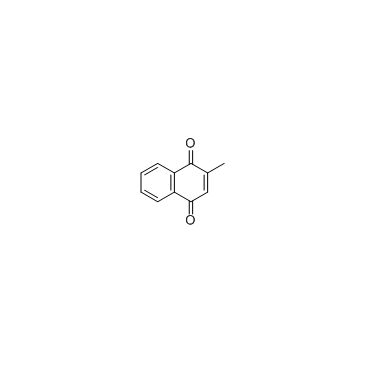
Menadione structure
|
Common Name | Menadione | ||
|---|---|---|---|---|
| CAS Number | 58-27-5 | Molecular Weight | 172.18000 | |
| Density | 1.225 g/cm3 | Boiling Point | 304.5ºC at 760 mmHg | |
| Molecular Formula | C11H8O2 | Melting Point | 105-107 °C(lit.) | |
| MSDS | Chinese USA | Flash Point | 113.8ºC | |
| Symbol |

GHS07 |
Signal Word | Warning | |
Use of MenadioneMenadione, a synthetic naphthoquinone, can be converted to active vitamin K2 in vivo.Target: OthersMenadione (Vitamin K3) is a synthetic analogue of of 1,4-naphthoquinone with a methyl group in the 2-position. Menadione is used as a phosphatase inhibitor and an inhibitor of mitochondrial DNA polymerase γ (pol γ). Menadione can be used as an oxidative injury (free radical generator) inducing agent [1]. |
| Name | Menadione |
|---|---|
| Synonym | More Synonyms |
| Description | Menadione, a synthetic naphthoquinone, can be converted to active vitamin K2 in vivo.Target: OthersMenadione (Vitamin K3) is a synthetic analogue of of 1,4-naphthoquinone with a methyl group in the 2-position. Menadione is used as a phosphatase inhibitor and an inhibitor of mitochondrial DNA polymerase γ (pol γ). Menadione can be used as an oxidative injury (free radical generator) inducing agent [1]. |
|---|---|
| Related Catalog | |
| Target |
Human Endogenous Metabolite |
| References |
| Density | 1.225 g/cm3 |
|---|---|
| Boiling Point | 304.5ºC at 760 mmHg |
| Melting Point | 105-107 °C(lit.) |
| Molecular Formula | C11H8O2 |
| Molecular Weight | 172.18000 |
| Flash Point | 113.8ºC |
| Exact Mass | 172.05200 |
| PSA | 34.14000 |
| LogP | 2.01190 |
| Storage condition | Store at RT. |
| Stability | Stable. May be light sensitive. Incompatible with strong oxidizing agents. |
| Water Solubility | INSOLUBLE |
CHEMICAL IDENTIFICATION
HEALTH HAZARD DATAACUTE TOXICITY DATA
MUTATION DATA
|
| Symbol |

GHS07 |
|---|---|
| Signal Word | Warning |
| Hazard Statements | H302-H315-H319-H335 |
| Precautionary Statements | P261-P305 + P351 + P338 |
| Personal Protective Equipment | dust mask type N95 (US);Eyeshields;Faceshields;Gloves |
| Hazard Codes | Xn:Harmful |
| Risk Phrases | R22;R36/37/38;R43 |
| Safety Phrases | S26-S36-S37/39-S24 |
| RIDADR | NONH for all modes of transport |
| WGK Germany | 3 |
| RTECS | QL9100000 |
| HS Code | 2914700090 |
| Precursor 10 | |
|---|---|
| DownStream 10 | |
| HS Code | 2914690090 |
|---|---|
| Summary | 2914690090 other quinones。Supervision conditions:None。VAT:17.0%。Tax rebate rate:9.0%。MFN tariff:5.5%。General tariff:30.0% |
|
Hypoxanthine uptake by skeletal muscle microvascular endothelial cells from equilibrative nucleoside transporter 1 (ENT1)-null mice: effect of oxidative stress.
Microvasc. Res. 98 , 16-22, (2015) Adenosine is an endogenous regulator of vascular tone. This activity of adenosine is terminated by its uptake and metabolism by microvascular endothelial cells (MVEC). The predominant transporter invo... |
|
|
Minimal detection of nuclear mutations in XP-V and normal cells treated with oxidative stress inducing agents.
J. Biochem. Mol. Toxicol. 28(12) , 568-77, (2014) Elevated levels of reactive oxygen species (ROS) can be induced by exposure to various chemicals and radiation. One type of damage in DNA produced by ROS is modification of guanine to 7,8-dihydro-8-ox... |
|
|
Time series analysis of oxidative stress response patterns in HepG2: a toxicogenomics approach.
Toxicology 306 , 24-34, (2013) Oxidative stress plays an important role in chemically induced liver injury, however, our insight into molecular responses to different oxygen radicals is fragmentary. Since these cellular responses w... |
| Aquakay |
| Karcon |
| Kipca |
| Menadione |
| Synkay |
| Koaxin |
| Kaykot |
| Kanone |
| 2-methyl-1,4-naphthalenedione |
| EINECS 200-372-6 |
| Kareon |
| 2-methyl-naphthoquinone |
| Juva-K |
| 2-methyl-1,4-naphthodione |
| MFCD00001681 |
| VK3 |
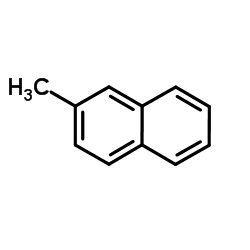 CAS#:91-57-6
CAS#:91-57-6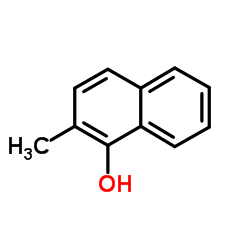 CAS#:7469-77-4
CAS#:7469-77-4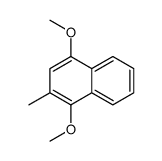 CAS#:53772-19-3
CAS#:53772-19-3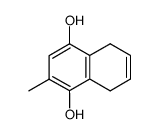 CAS#:3090-46-8
CAS#:3090-46-8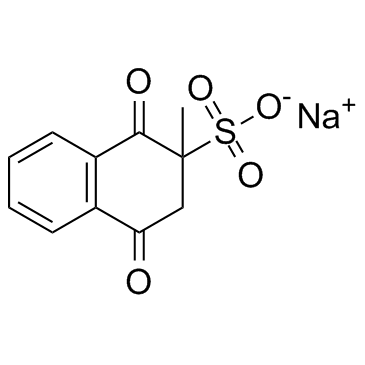 CAS#:130-37-0
CAS#:130-37-0 CAS#:14093-86-8
CAS#:14093-86-8 CAS#:64-19-7
CAS#:64-19-7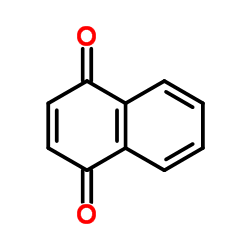 CAS#:130-15-4
CAS#:130-15-4 CAS#:82654-73-7
CAS#:82654-73-7 CAS#:1515-76-0
CAS#:1515-76-0 CAS#:111052-03-0
CAS#:111052-03-0 CAS#:481-85-6
CAS#:481-85-6![4-ethoxy-2-methyl-[1]naphthol structure](https://image.chemsrc.com/caspic/083/85485-07-0.png) CAS#:85485-07-0
CAS#:85485-07-0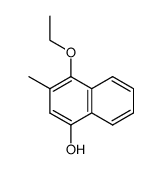 CAS#:85485-08-1
CAS#:85485-08-1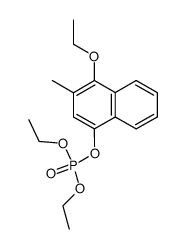 CAS#:85485-05-8
CAS#:85485-05-8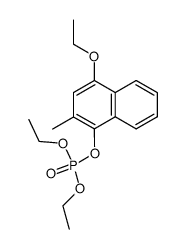 CAS#:85485-06-9
CAS#:85485-06-9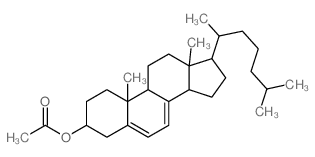 CAS#:1059-86-5
CAS#:1059-86-5 CAS#:2211-27-0
CAS#:2211-27-0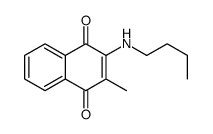 CAS#:18690-80-7
CAS#:18690-80-7
